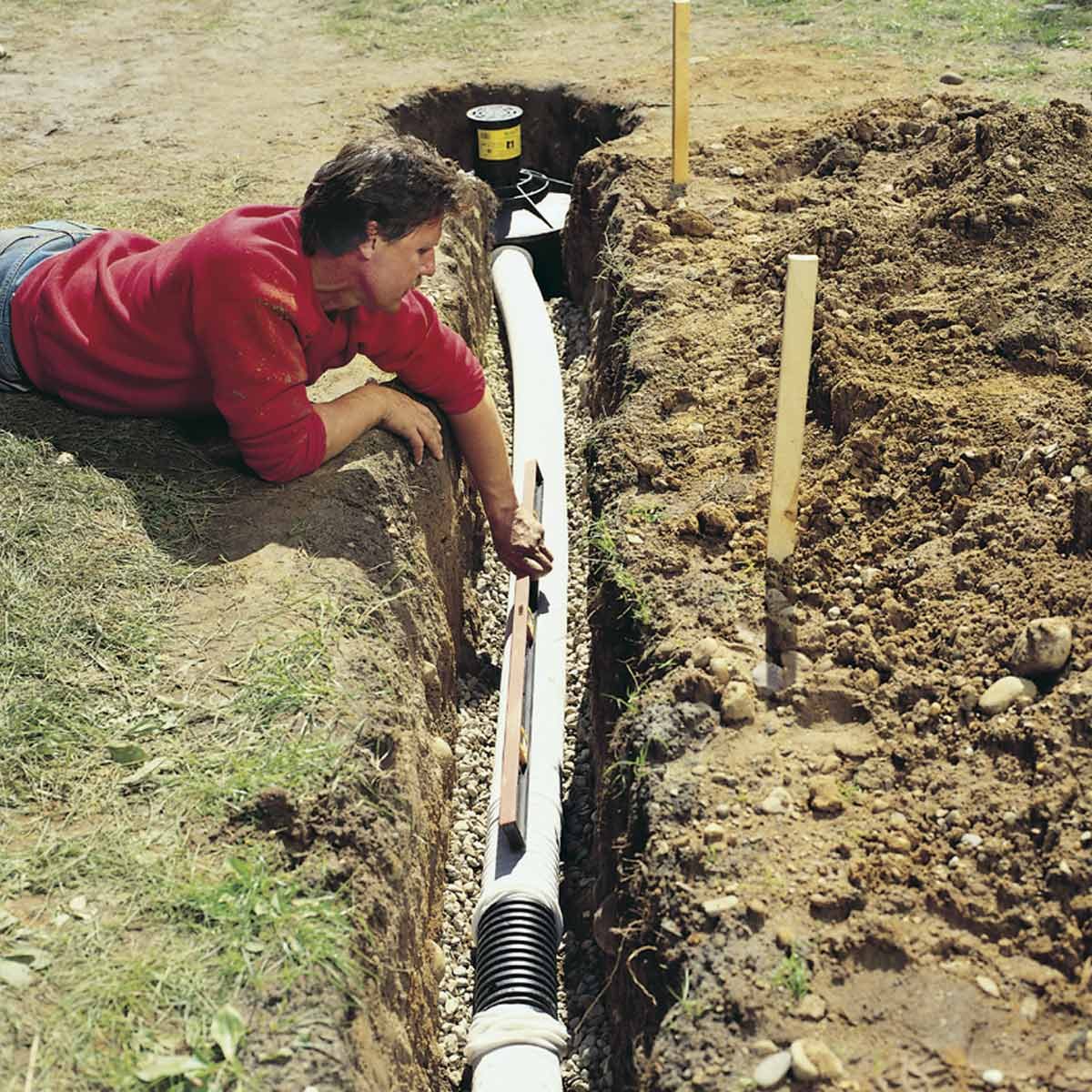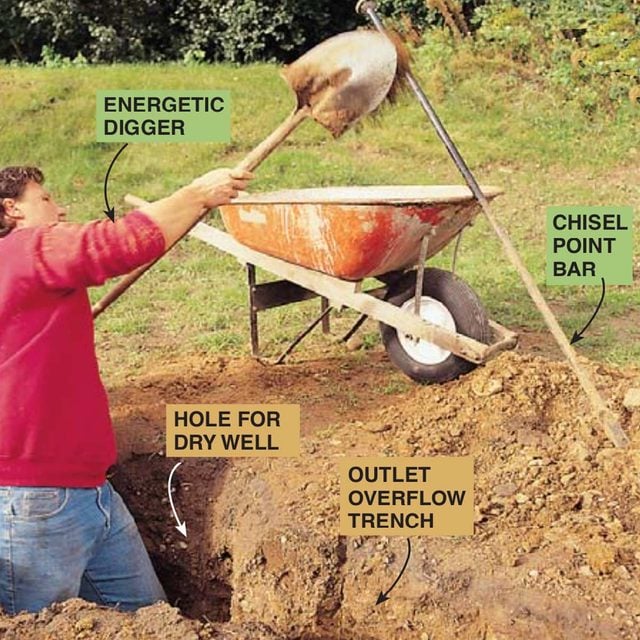


Drain water away from your home and dry out your soggy yard with this in-ground system.
![]()
Time
![]()
Complexity
![]()
Cost
Stop dealing with water problems in your home and yard by installing this in-ground drainage system. This is a permanent, long-term solution to your wet yard. These step-by-step instructions and how-to photos walk you through the DIY installation. This project requires a lot of digging, but you won't have to deal with drainage issues ever again.
If you happen to be among the unlucky 60 percent of homeowners who have some type of water problem in their yard, you’ve got two options: Sell your house and buy one of the homes from the other 40 percent, or roll up your sleeves and deal with it.
Most wet yards can be drained effectively. It’s rare to have unsolvable water problems such as a low water table that pushes water up from below. If you’re in this sorry situation, however, consult a pro—it’s nearly impossible to fix unless you have a sump pump and a place to dump all that water.
In this article, we’ll familiarize you with the products available and show you a step-by-step method of getting rid of excess rainwater and draining it clear of the house. We can’t guarantee that a system like this will dry up all your water troubles, but it’ll definitely help.
In most cases, it’s pretty obvious where the water is coming from. Often there’s a slope approaching the house, a depression in the yard that causes pooling, or excess roof water draining next to the foundation. You can take care of minor foundation drainage problems by making sure the soil slopes away from the house.
Also, properly installed gutters, with a well-directed downspout that empties clear of the foundation, can be very effective. If you’ve already zeroed in on those solutions and still need help, stick with this article.
As with any yard project that requires digging, you must find where buried electrical, telephone and TV cables and gas piping are located. Call your local utilities or 811.
The location of underground wiring cables and pipe may influence the routing of your drainage plan. You may want to consider an alternate route or have the utility disconnected until the job is completed.
Now that you’re familiar with the basic parts, follow our step-by-step instructions.
Dig a hole deep enough to accommodate your dry well and the overflow tube. Haul away most of the dirt, but keep some handy to partially refill the hole.

Family Handyman
Dig the trench deep enough to drain downhill from the side of the dry well. You’ll also need at least 3 in. of crushed rock to add to the bottom of the trench to promote water absorption. Assuming your lot isn’t shaped like a large salad bowl with the house at the bottom center, look for a spot that’s lower than the house to drain the excess water. If one of those spots is right next to your neighbor’s garage, resist the temptation. If the lay of the land isn’t obvious, use a line level with stakes and a tape measure to check for water escape routes. Remember, you might not be able to use all the techniques we show, so pick those that best meet your needs.

Family Handyman
The soil we dug up for our 70-ft. long trench and dry well was among the worst (next to solid rock) for digging. The mostly clay soil (a poor-draining type) was full of 4- to 8-in. fieldstone—a far cry from the ideal sand soil. The digging took me and a helper two solid days of backbreaking labor. With any luck, yours will be a lot easier to dig, but be prepared. Get a large chisel-point bar to pry stones out of the way just to make room for each shovelful.
The dry well we used has a capacity of nearly 30 gallons. This unit can also be stacked on top of or alongside another if you need extra holding capacity. The dry well is very strong, and once you bury it, you can drive your car over it without breaking it. In fact, the dry well can be installed under a driveway. The drain inlet at the top is optional.
You can also choose to: (1) drain water directly into the side port of the unit from a run of perforated or unperforated drain tubing, (2) link two or more dry well units together, or (3) use it independently with a top drain for small pooling areas. You can purchase snap-together tube in 10-ft. lengths as we did or buy a 50-ft. roll, which is difficult to transport. You’ll find the tube is available in either perforated (1/2-in. holes randomly cut into the sides) or unperforated.
Choose a perforated tube if you’d like it to drain as it carries water. However, if you only want the tube to deliver water from one spot to another, buy unperforated tubing and don’t use a sock. The sock is typically sold in 100-ft. lengths. You can also buy a wide assortment of fittings to connect lines, as well as a fitting to attach to your downspout. The materials for this system cost about $200. We spent another $200 for 2 cu. yds. of crushed rock delivered to our driveway.
Before going to the home center, make sure you’ve got a good shovel, a string line and level, and a solid wheelbarrow. If you don’t, buy them.